Sheldon Saul Hendler and David Rorvik
See book keywords and concepts |
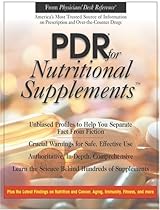 HERBS
Interactions may occur if EPO is used with such herbs as garlic (Allium sativa) and ginkgo (Ginkgo biloba). Such interactions may be manifested by nosebleeds and easy bruising.
OVERDOSAGE
There are no reports of overdosage with EPO.
DOSAGE AND ADMINISTRATION
EPO is available in capsules and also in topical preparations for cosmetic use. A capsule of EPO typically contains about 9% GLA. Doses used for the management of rheumatoid arthritis range from about 360 milligrams to 2.8 grams daily in divided doses (expressed as GLA). HERBS
Interactions may occur if EPO is used with such herbs as garlic (Allium sativa) and ginkgo (Ginkgo biloba). Such interactions may be manifested by nosebleeds and easy bruising.
OVERDOSAGE
There are no reports of overdosage with EPO.
DOSAGE AND ADMINISTRATION
EPO is available in capsules and also in topical preparations for cosmetic use. A capsule of EPO typically contains about 9% GLA. Doses used for the management of rheumatoid arthritis range from about 360 milligrams to 2.8 grams daily in divided doses (expressed as GLA). |
| INTERACTIONS
Interactions may occur between fish oil supplements and aspirin and other non-steroidal anti-inflammatory drugs and herbs such as garlic (Allium sativum) and ginkgo (Ginkgo biloba). Such interactions might be manifested by increased susceptibility to bruising, nosebleeds, hemoptysis, hematem-esis, hematuria and blood in the stool. Most who take fish oil supplements and the above drugs or herbs do not suffer from these problems, and, if they occur, they are rare. If they do occur, the dose should be lowered or discontinued.
OVERDOSAGE
Not reported. |
| HERBS
Interactions may occur between hemp seed oil, ALA and its metabolites, and such herbs as garlic (Allium sativum) and ginkgo (Ginkgo biloba). Such interactions might be manifested by nosebleeds and easy bruising.
OVERDOSAGE
There are no reports of hemp seed overdosage.
DOSAGE AND ADMINISTRATION
Hemp seed oil comes in capsules and bottles of oil. The ALA content ranges from 15 to 25%. Three to 4 grams of ALA is approximately equivalent to the 0.3 grams, which one would derive from a fish-rich diet. |
Gary Null, Ph.D.
See book keywords and concepts |
 GINKGO biloba.....................................747
HYDERGINE................................................761
■Cross Referenced
ISOFLAVONES/GENISTEIN......................764
L-DOPA.......................................................769
LYCOPENE..................................................776
■MELATONIN............................................777
*NAC.............................................................786
■PHOSPHATIDYLSERINE.........................803
PIRACETAM................................................809
S-ADENOSYLMETHIONINE..................... GINKGO biloba.....................................747
HYDERGINE................................................761
■Cross Referenced
ISOFLAVONES/GENISTEIN......................764
L-DOPA.......................................................769
LYCOPENE..................................................776
■MELATONIN............................................777
*NAC.............................................................786
■PHOSPHATIDYLSERINE.........................803
PIRACETAM................................................809
S-ADENOSYLMETHIONINE..................... |
Sheldon Saul Hendler and David Rorvik
See book keywords and concepts |
 INTERACTIONS
Interactions may occur between EPA supplements and aspirin and other non-steroidal anti-inflammatory dmgs and herbs such as garlic (Allium sativum) and ginkgo (Ginkgo biloba). Such interactions might be manifested by increased susceptibility to bruising, nosebleeds, hemoptysis, hematem-esis, hematuria and blood in the stool. Most who take EPA supplements and the above dmgs or herbs do not suffer from these problems and if they occur, they are rare. If they do occur, the EPA dose should be lowered or discontinued. INTERACTIONS
Interactions may occur between EPA supplements and aspirin and other non-steroidal anti-inflammatory dmgs and herbs such as garlic (Allium sativum) and ginkgo (Ginkgo biloba). Such interactions might be manifested by increased susceptibility to bruising, nosebleeds, hemoptysis, hematem-esis, hematuria and blood in the stool. Most who take EPA supplements and the above dmgs or herbs do not suffer from these problems and if they occur, they are rare. If they do occur, the EPA dose should be lowered or discontinued. |
Janet Zand, LAc, OMD, Allan N. Spreed, MD, CNC, James B. LaValle, RPh, ND
See book keywords and concepts |
 Ginkgo biloba extract contains flavonoids with an affinity for organs that are rich in connective tissue, including the eyes. Ginkgo protects cellular membranes and has notable antioxidant properties. It also enhances the use of oxygen and glucose by the cells, and works to normalize circulation. Select a ginkgo leaf extract containing at least 24 percent ginkgo heterosides (sometimes called flavogly-cosides) and take 40 milligrams three times daily.
GENERAL RECOMMENDATIONS
Ž If you have dry eyes, you will probably feel a strong temptation to rub them. Don't. Ginkgo biloba extract contains flavonoids with an affinity for organs that are rich in connective tissue, including the eyes. Ginkgo protects cellular membranes and has notable antioxidant properties. It also enhances the use of oxygen and glucose by the cells, and works to normalize circulation. Select a ginkgo leaf extract containing at least 24 percent ginkgo heterosides (sometimes called flavogly-cosides) and take 40 milligrams three times daily.
GENERAL RECOMMENDATIONS
Ž If you have dry eyes, you will probably feel a strong temptation to rub them. Don't. |
Ronald L. Hoffman, M.D.
See book keywords and concepts |
 Ginkgo biloba, commonly thought of as an antiaging nutrient, has specific antiinflammatory effects in asthma.
Acupuncture, the ancient Chinese healing art, has been proven in numerous studies to be helpful in mitigating the symptoms of asthma. In China, departments of pulmonary medicine, while adopting modern techniques of pharmacological management, are never without the attendance of skilled acupuncturists. I find that acupuncture can be useful in the treatment of patients trying to stop smoking as well as in the treatment of asthma. Ginkgo biloba, commonly thought of as an antiaging nutrient, has specific antiinflammatory effects in asthma.
Acupuncture, the ancient Chinese healing art, has been proven in numerous studies to be helpful in mitigating the symptoms of asthma. In China, departments of pulmonary medicine, while adopting modern techniques of pharmacological management, are never without the attendance of skilled acupuncturists. I find that acupuncture can be useful in the treatment of patients trying to stop smoking as well as in the treatment of asthma. |
Schuyler W. Lininger, Jr. DC
See book keywords and concepts |
 Ginkgo biloba (p. 427) fibroplasia)
Other
Vitamin E (p. 344)
(associated with
abetalipoproteinemia) Following associated
with diabetic
retinopathy; Magnesium (p. 310) Quercetin (p. 328) Selenium (p. 331) Vitamin A (p. 336)
and Vitamin E
(p. 344) (combined) Vitamin C (p. 341) Vitamin B6 (p. 340) Vitamin Bl2 (p. 337)
Rheumatoid Arthritis (RA)
Rheumatoid arthritis (RA) is a chronic inflammatory condition; it is an autoimmune disease, in which the immune system attacks the joints and sometimes other parts of the body. Ginkgo biloba (p. 427) fibroplasia)
Other
Vitamin E (p. 344)
(associated with
abetalipoproteinemia) Following associated
with diabetic
retinopathy; Magnesium (p. 310) Quercetin (p. 328) Selenium (p. 331) Vitamin A (p. 336)
and Vitamin E
(p. 344) (combined) Vitamin C (p. 341) Vitamin B6 (p. 340) Vitamin Bl2 (p. 337)
Rheumatoid Arthritis (RA)
Rheumatoid arthritis (RA) is a chronic inflammatory condition; it is an autoimmune disease, in which the immune system attacks the joints and sometimes other parts of the body. |
David Heber, M.D., Ph.D.
See book keywords and concepts |
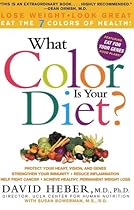 The ruib dnu rouub ior nedim
I U 3 leaves resemble a maidenhair fern and are easy to identify as they have two lobes, thus giving rise to the name "biloba."
Leaf extracts contain ginkgo flavonoid glycosides and terpene lactones, which are thought to be the active agents in ginkgo. There is some evidence that ginkgo can increase blood flow in the brain and improve mental function in the early stages of Alzheimer's disease and other forms of dementia. It can also inhibit platelet-activating factor, giving rise to the recommendation that this herb be avoided by people on blood-thinning agents. The ruib dnu rouub ior nedim
I U 3 leaves resemble a maidenhair fern and are easy to identify as they have two lobes, thus giving rise to the name "biloba."
Leaf extracts contain ginkgo flavonoid glycosides and terpene lactones, which are thought to be the active agents in ginkgo. There is some evidence that ginkgo can increase blood flow in the brain and improve mental function in the early stages of Alzheimer's disease and other forms of dementia. It can also inhibit platelet-activating factor, giving rise to the recommendation that this herb be avoided by people on blood-thinning agents. |
James A. Howenstine, MD
See book keywords and concepts |
 These include Vitamin E, Vitamin C, Selenium, Ginko biloba and huckleberry. Four atoms of selenium are needed to build an atom of glutathione peroxidase, a crucial enzyme. Patients deficient in selenium have lower glutathione activity and adding 200 mg of selenium rich yeast to the diet daily raises the activity of glutathione.
Macular degeneration can be prevented by ingestion of carotenoids (spinach, tomatoes, green vegetables, grapes, yellow and green onions, and green tea.) Zinc taken in 30 mg daily halts visual loss in ARMD.
Taurine is critical for nerve impulse formation. These include Vitamin E, Vitamin C, Selenium, Ginko biloba and huckleberry. Four atoms of selenium are needed to build an atom of glutathione peroxidase, a crucial enzyme. Patients deficient in selenium have lower glutathione activity and adding 200 mg of selenium rich yeast to the diet daily raises the activity of glutathione.
Macular degeneration can be prevented by ingestion of carotenoids (spinach, tomatoes, green vegetables, grapes, yellow and green onions, and green tea.) Zinc taken in 30 mg daily halts visual loss in ARMD.
Taurine is critical for nerve impulse formation. |
Nicola Reavley
See book keywords and concepts |
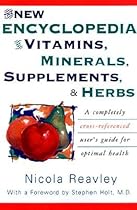 These include hawthorn (Crataegus oxyacantha), motherwort (Leonurus cardiaca), garlic (Allium sativum), onions (Allium cepa), ginger (Zingiber officinale), gugulipid (Commiphora mukul), cayenne (Capsicum annuum), ginkgo (Ginkgo biloba), yarrow (Achillea millefolium), linden blossom (Tilia europea) and cramp bark (Viburnum opulus). See page 384 for more information on these herbs and the precautions that may be necessary.
Carpal tunnel syndrome is a painful disorder of the wrist and hand which is caused by irritation of the median nerve at the wrist. These include hawthorn (Crataegus oxyacantha), motherwort (Leonurus cardiaca), garlic (Allium sativum), onions (Allium cepa), ginger (Zingiber officinale), gugulipid (Commiphora mukul), cayenne (Capsicum annuum), ginkgo (Ginkgo biloba), yarrow (Achillea millefolium), linden blossom (Tilia europea) and cramp bark (Viburnum opulus). See page 384 for more information on these herbs and the precautions that may be necessary.
Carpal tunnel syndrome is a painful disorder of the wrist and hand which is caused by irritation of the median nerve at the wrist. |
| Ginkgo (Ginkgo biloba)
The ginkgo tree is the only survivor of the world's oldest living tree species. It has many valuable effects including stabilising cell membranes, reducing free radical damage, improving blood circulation and enhancing oxygen and glucose use. Ginkgo is particularly beneficial for brain, nerves and blood vessels.
Uses
Ginkgo is used to treat senile conditions, including Alzheimer's disease; hardening of the arteries; depression, and allergies. It is also used as a treatment for insufficient blood circulation to the brain and peripheral vessels. |
| These include tonics such as ginseng (Panax ginseng and Eleutherococcus senticosus), which can improve vitality and resistance to disease; ginkgo (Ginkgo biloba), which can improve mental function; damiana (Turnera diffusa), which can boost libido; ginger (Zingiber officinale), which can improve circulation; and hawthorn (Crataegus oxyacantha), which is a heart tonic. Herbs which may be useful during menopause include chaste tree ( Vitex agnus castus), St John's wort (Hypericum perforatum), motherwort (Leonurus cardiaca), dong quai (Angelica sinensis), and black cohosh (Cimicifuga racemosa). |
| Other herbs such as ginkgo (Ginkgo biloba), hawthorn (Crataegus oxyacantha) and bilberry (Vaccinium myrtillus) may be useful in preventing the vascular complications commonly seen in diabetic patients. See page 384 for more information on these herbs and the precautions that may be necessary.
There are many disorders that affect the eyes. Some are localized problems while others are a sign of disease elsewhere in the body. Eye diseases are particularly common in elderly people. |
| These include cayenne or chilli pepper {Capsicum annuum), ginger (Zingiber officinale), garlic (Allium sativum), turmeric (Curcuma longd), ginkgo (Ginkgo biloba) and bilberry (Vaccinium myrtillus). See page 384 for more information on these herbs and the precautions that may be necessary. |
Gary Null
See book keywords and concepts |
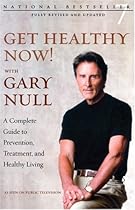 Ginkgo biloba. Studies demonstrate ginkgo's effectiveness in leveling mood swings.
Ginseng normalizes brain hormones. It balances body temperature and is effective in preventing hot flashes.
Wild yam contains beneficial progesterone, the precursor of estrogen. This gives a woman the building blocks needed to create more hormones.
The following herbs may also prove beneficial: licorice root, black cohosh, dong quai, alfalfa, red clover, sarsaparilla, and blessed thistle.
HOMEOPATHY The homeopathic remedy chosen should correspond to the symptoms described. According to Dr. Ginkgo biloba. Studies demonstrate ginkgo's effectiveness in leveling mood swings.
Ginseng normalizes brain hormones. It balances body temperature and is effective in preventing hot flashes.
Wild yam contains beneficial progesterone, the precursor of estrogen. This gives a woman the building blocks needed to create more hormones.
The following herbs may also prove beneficial: licorice root, black cohosh, dong quai, alfalfa, red clover, sarsaparilla, and blessed thistle.
HOMEOPATHY The homeopathic remedy chosen should correspond to the symptoms described. According to Dr. |
| Ginkgo biloba. The ginkgo tree has survived for hundreds of thousands of years due to its powerful immune system. An extract of the leaf of the tree improves circulation to the microcapillaries of the brain and heart so that needed nutrients and oxygen can get to all the tissues.
Ginseng is the best-known longevity herb. For centuries, the Chinese have revered ginseng for its rejuvenating effects. Research has shown that ginseng can stop free radical damage associated with aging. It helps people focus better when under stress, and increases overall energy levels.
Gota kola. |
Schuyler W. Lininger, Jr. DC
See book keywords and concepts |
 Ginkgo biloba (p. 427)
Secondary
Huperzine A
(P. 302) Vitamin E (p. 344)
Other
Coenzyme Q c
(p. 283) DMAE (2-dimethylam
inoethanol) (p. 290) Folic acid (p. 297) NADH (p. 317) Vitamin Bi; (p. 337)
Ashwagandha
(p. 393) Asian ginseng
(p. 394) Astragalus (p. 395) Eleuthero (p. 419)
Angina
Chest pain due to reduced blood flow to the heart is known as angina or angina pectoris. Hardening of the coronary arteries (atherosclerosis [p. 17]) that feed the heart is usually the underlying problem. Ginkgo biloba (p. 427)
Secondary
Huperzine A
(P. 302) Vitamin E (p. 344)
Other
Coenzyme Q c
(p. 283) DMAE (2-dimethylam
inoethanol) (p. 290) Folic acid (p. 297) NADH (p. 317) Vitamin Bi; (p. 337)
Ashwagandha
(p. 393) Asian ginseng
(p. 394) Astragalus (p. 395) Eleuthero (p. 419)
Angina
Chest pain due to reduced blood flow to the heart is known as angina or angina pectoris. Hardening of the coronary arteries (atherosclerosis [p. 17]) that feed the heart is usually the underlying problem. |
Patrick Quillin, PhD,RD,CNS
See book keywords and concepts |
 Ginkgo biloba (24% heteroside) 40 mg
Improves circulation, augments the production of healthy prostaglandin PGE-1, immune stimulant, and adaptogen (helps to regulate many cellular functions)._
The ginkgo tree is one of the oldest living species on earth, having been around for over 200 million years. The ginkgo tree is an incredibly adaptable and tenacious plant. One ginkgo tree survived the near-ground zero nuclear blast in Hiroshima, Japan. Millions of these cone-shaped evergreen trees survive amidst air pollution, drought and poor soil throughout the world. Ginkgo biloba (24% heteroside) 40 mg
Improves circulation, augments the production of healthy prostaglandin PGE-1, immune stimulant, and adaptogen (helps to regulate many cellular functions)._
The ginkgo tree is one of the oldest living species on earth, having been around for over 200 million years. The ginkgo tree is an incredibly adaptable and tenacious plant. One ginkgo tree survived the near-ground zero nuclear blast in Hiroshima, Japan. Millions of these cone-shaped evergreen trees survive amidst air pollution, drought and poor soil throughout the world. |
Schuyler W. Lininger, Jr. DC
See book keywords and concepts |
 Herbs That May Be Helpful
Ginkgo biloba (p. 427) appears to improve the circulation in small blood vessels.10 For that reason, some doctors of natural medicine recommend ginkgo for individuals with Raynaud's disease. However, no studies have been published on the use of ginkgo for this purpose. Ginkgo is often used as a standard extract (containing 24% ginkgo heterosides) in the amount of 40 mg 3 times per day. Garlic (p. 425), which is known to improve circulation, is also recommended by some doctors of natural medicine as a supportive nutrient for people with Raynaud's disease. Herbs That May Be Helpful
Ginkgo biloba (p. 427) appears to improve the circulation in small blood vessels.10 For that reason, some doctors of natural medicine recommend ginkgo for individuals with Raynaud's disease. However, no studies have been published on the use of ginkgo for this purpose. Ginkgo is often used as a standard extract (containing 24% ginkgo heterosides) in the amount of 40 mg 3 times per day. Garlic (p. 425), which is known to improve circulation, is also recommended by some doctors of natural medicine as a supportive nutrient for people with Raynaud's disease. |
Thomas Bartram
See book keywords and concepts |
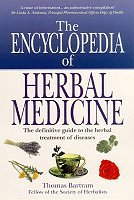 Ginkgo biloba. "Walking distance is definitely increased." (Rudolf F. Weiss MD. Herbal Medicine, Beaconsfield Publishers) Garlic. 80 patients with symptomatic state II occlusive disease (claudication), randomised, to take either Garlic powder 800mg a day in tablet form (equivalent to Kwai) or placebo for 12 weeks. A significantly greater improvement in walking distance, apparent after just 4 weeks, occurred in the Garlic-treated group compared with the placebo group. (Professor H. Kiesewetter, Department of Clinical Haemostasiology, University of Saarland, Germany) Diet. Lacto-vegetarian. Ginkgo biloba. "Walking distance is definitely increased." (Rudolf F. Weiss MD. Herbal Medicine, Beaconsfield Publishers) Garlic. 80 patients with symptomatic state II occlusive disease (claudication), randomised, to take either Garlic powder 800mg a day in tablet form (equivalent to Kwai) or placebo for 12 weeks. A significantly greater improvement in walking distance, apparent after just 4 weeks, occurred in the Garlic-treated group compared with the placebo group. (Professor H. Kiesewetter, Department of Clinical Haemostasiology, University of Saarland, Germany) Diet. Lacto-vegetarian. |
Schuyler W. Lininger, Jr. DC
See book keywords and concepts |
 Herbs That May Be Helpful
Ginkgo biloba (p. 427) has been used to treat tinnitus. Two studies have found an extract of ginkgo standardized to contain 24% flavone glycosides and 6% terpene lactones in the amount of 120 mg per day useful for tinnitus sufferers,67 although other studies have failed to find ginkgo beneficial.8
The lesser periwinkle, Vinca minor, contains a compound known as vincamine. Extracts containing vincamine have been used in Germany to help decrease tinnitus. Herbs That May Be Helpful
Ginkgo biloba (p. 427) has been used to treat tinnitus. Two studies have found an extract of ginkgo standardized to contain 24% flavone glycosides and 6% terpene lactones in the amount of 120 mg per day useful for tinnitus sufferers,67 although other studies have failed to find ginkgo beneficial.8
The lesser periwinkle, Vinca minor, contains a compound known as vincamine. Extracts containing vincamine have been used in Germany to help decrease tinnitus. |
| In Rokan (Ginkgo biloba): Recent Results in Pharmacology and Clinic, Fiinfgeld FW, ed. Berlin: Springer-Verlag, 1988, 231-36.
14. Scharrer A, Ober M. Anthocyanosides in the treatment of retinopathies. Klin Monatsbl Augenheikld Beih 1981; 178: 386-89.
15. Mian E, Curri SB, et al. Anthocyanosides and the walls of microvessels: Further aspects of the mechanism of action of their protective in syndromes due to abnormal capillary fragility. Minerva Med 1977; 68: 3565-81.
Menopause
1. Baird DD, Umbach DM, Landsedell L, et al. |
James A. Howenstine, MD
See book keywords and concepts |
 The dose is 60 mg daily of standardized extract
Ginko biloba is also an antioxidant, which helps circulation to small blood vessels. The dose is 60 to 160 mg daily of standardized extract. Avoid regular use of aspirin, which appears to be a possible risk factor for ARMD when taken on a regular basis.
Retinitis Pigmentosa
This condition is associated with pigmentation of the retina. When this pigment deposit involves the macula, visual loss occurs. The dose is 60 mg daily of standardized extract
Ginko biloba is also an antioxidant, which helps circulation to small blood vessels. The dose is 60 to 160 mg daily of standardized extract. Avoid regular use of aspirin, which appears to be a possible risk factor for ARMD when taken on a regular basis.
Retinitis Pigmentosa
This condition is associated with pigmentation of the retina. When this pigment deposit involves the macula, visual loss occurs. |
Christian Ratsch
See book keywords and concepts |
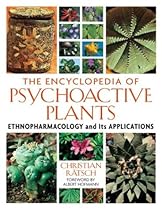 The ginkgo tree (Ginkgo biloba) is an ancient Asian medicinal plant. Since its positive effects on brain function have become known in the West, there has been renewed interest in this traditional herbal medicine. Because ginkgo is now regarded as a brain tonic, the extract is often added to so-called brain foods and to herbal ecstasy. (Copperplate engraving from Kaempfer, Amoenitates Exoticae, 1712)
423 A pharmacognostic study conducted at the Pharmaceutical Institute in Bern (Switzerland) was unable to identify this component as a raw drug obtained from Myristica spp. (Leitner 1995, 6). The ginkgo tree (Ginkgo biloba) is an ancient Asian medicinal plant. Since its positive effects on brain function have become known in the West, there has been renewed interest in this traditional herbal medicine. Because ginkgo is now regarded as a brain tonic, the extract is often added to so-called brain foods and to herbal ecstasy. (Copperplate engraving from Kaempfer, Amoenitates Exoticae, 1712)
423 A pharmacognostic study conducted at the Pharmaceutical Institute in Bern (Switzerland) was unable to identify this component as a raw drug obtained from Myristica spp. (Leitner 1995, 6). |
Andrew Chevallier
See book keywords and concepts |
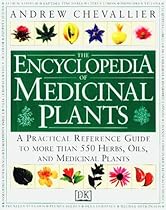 Ginkgo biloba, p. 98), and lily of the valley (Convallaria majalis, p. 192) have a greater-than-expected medicinal benefit, thanks to the natural combination of constituents within the whole plant. In some cases, the medicinal value of the herb may be due entirely to the combination of substances and cannot be reproduced by one or two "active" constituents alone.
The Moreton Bay chestnut is being investigated as a treatment for AIDS. Ginkgo biloba, p. 98), and lily of the valley (Convallaria majalis, p. 192) have a greater-than-expected medicinal benefit, thanks to the natural combination of constituents within the whole plant. In some cases, the medicinal value of the herb may be due entirely to the combination of substances and cannot be reproduced by one or two "active" constituents alone.
The Moreton Bay chestnut is being investigated as a treatment for AIDS. |
| Herb Ginkgo (Ginkgo biloba, p. 98) Remedy Take tablets or A tsp of fluid extract with water twice a day for 2-3 months at a time.
Herb Ginger (Zingiber officinale, p. 153) Remedy Grate X tsp of fresh ginger into your food each day.
Palpitations & Panic Attacks
Palpitations occur when the heart suddenly beats faster or irregularly. They can result from stress, anxiety, and nervous tension; however, they may also be caused simply by drinking too much caffeine (in tea, coffee, and cola drinks). In rare cases, palpitations indicate a heart problem. |
| Ginkgo biloba, p. 98), and American ginseng (Panax quinquefolium, p. 241), are flavorful and regularly used ingredients in Chinese recipes. Throughout southern Asia and Africa, herbs and hot spices give color, piquancy, and medicinal value to food. The herbs turmeric (Curcuma longa, p. 88), cardamom (Eletteria cardamomutu. p. 91), and ginger (Zingiber officinale, p. 153), which are all used in cooking, protect against gastrointestinal discomfort and infection. |
| Poor memory Combined with ginkgo (Ginkgo biloba, p. 98), hawthorn is used to enhance poor memory. It works by improving the circulation of blood within the head, thereby increasing the amount of oxygen to the brain.
Crataeva nurvula (Capparaceae)
Varuna, BARUN (HINDI) THREE-LEAVED CAPER
Varuna
A large, deciduous tree growing to 50 ft (15 m) high, with smooth bark and pale yellow flowers.
The bark of the varuna tree is an important herb for problems affecting the kidneys and bladder, especially kidney and bladder stones. |
| The Chinese ginkgo tree (Ginkgo biloba, p. 98), which improves circulation of blood to the head and helps the memory, is now cultivated on large plantations in France. It was the bestselling medicine of all in Germany in 1992.
European Traditions & the Future
Sales of over-the-counter herbal medicines in Europe are increasing at a dramatic rate. In the UK between 1990 and 1995, sales climbed by 25 percent. Herbal medicine or "phytotherapy" is so esteemed in Germany that conventionally trained doctors routinely prescribe herbs along with orthodox drugs. |












